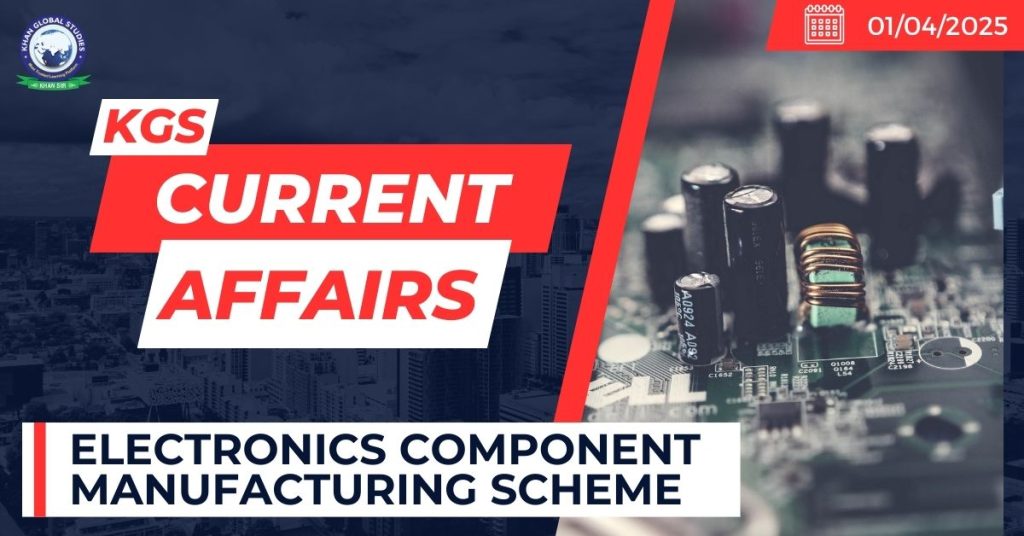Context:
Recently, the Union Cabinet approved the Electronics Component Manufacturing Scheme with a funding of Rs.22,919 crore to make India Atmanirbhar in the electronics supply chain.
About the Electronics Component Manufacturing Scheme
The Scheme aims to:
- Develop a robust electronics component ecosystem in India.
- Attract significant global and domestic investments in electronics component manufacturing.
- Increase Domestic Value Addition (DVA) by enhancing capacity and capabilities.
- Integrate Indian companies with Global Value Chains (GVCs).
Key Benefits:
- The scheme is expected to attract an investment of Rs 59,350 crore, resulting in the production of Rs 4,56,500 crore.
- The scheme will generate additional direct employment of 91,600 persons and many indirect jobs as well during its tenure.
Tenure of the scheme: The tenure of the scheme is 6 years with a 1-year gestation period.
Employment link payout: Payout of a part of the incentive is linked with employment targets achievement.
Unlike past schemes, this scheme is not based on a production-linked incentive, where manufacturers will be rewarded for incremental manufacturing. Instead, they will receive incentives pegged to the factory’s turnover, as well as in employment creation.
The scheme is the next step in the government’s electronics manufacturing efforts, which have so far focused on setting up semiconductor fabrication units and IT hardware, along with finished goods like mobile phones.
The target segment covered under the scheme and nature of incentive offered are as under:
Sub-assemblies: Turnover-linked incentive
- Display module sub-assembly
- Camera module sub-assembly
Bare components: Turnover-linked incentive
- Non-Surface Mount Devices (non-SMD) passive components for electronic applications
- Electro-mechanicals for electronic applications
- Multi-layer Printed Circuit Board (PCB)
- Li-ion Cells for digital applications (excluding storage and mobility)
- Enclosures for Mobile IT Hardware products and related devices
Selected bare components: Hybrid incentive
- High-density interconnect (HDI)/ Modified semi-additive process (MSAP)/ Flexible PCB
- SMD passive components
Supply chain ecosystem and capital equipment for electronics manufacturing: Capex incentive
- Parts/components used in the manufacturing of sub-assembly (A) and bare components (B) & (C)
- Capital goods used in electronics manufacturing, including their sub-assemblies and components
Overview of the Electronics Sector in India

- It is one of the highest-traded and fastest-growing industries globally.
- The domestic production of electronic goods has increased from Rs 1.90 lakh crore in FY 2014-15 to Rs 9.52 lakh crore in FY 2023-24 at a CAGR of more than 17%.
- The exports of electronic goods have also increased from Rs 0.38 lakh crore in FY 2014-15 to Rs 2.41 lakh crore in FY 2023-24 at a CAGR of more than 20%.
- The top five destinations for Indian electronic goods exports in Financial Year 25 (April- June) were: the USA (36% of all exports), UAE, Netherlands, UK, and Italy.
- The government has launched schemes such as the Manufacturing of Electronic Components and Semiconductors (SPECS), Modified Electronic Manufacturing Clusters (EMC 2.0), etc., to promote the country’s electronic goods industry.
- The Ministry of Electronics and Information Technology (MeitY) is the apex body governing India’s electronics and information technology industry.

